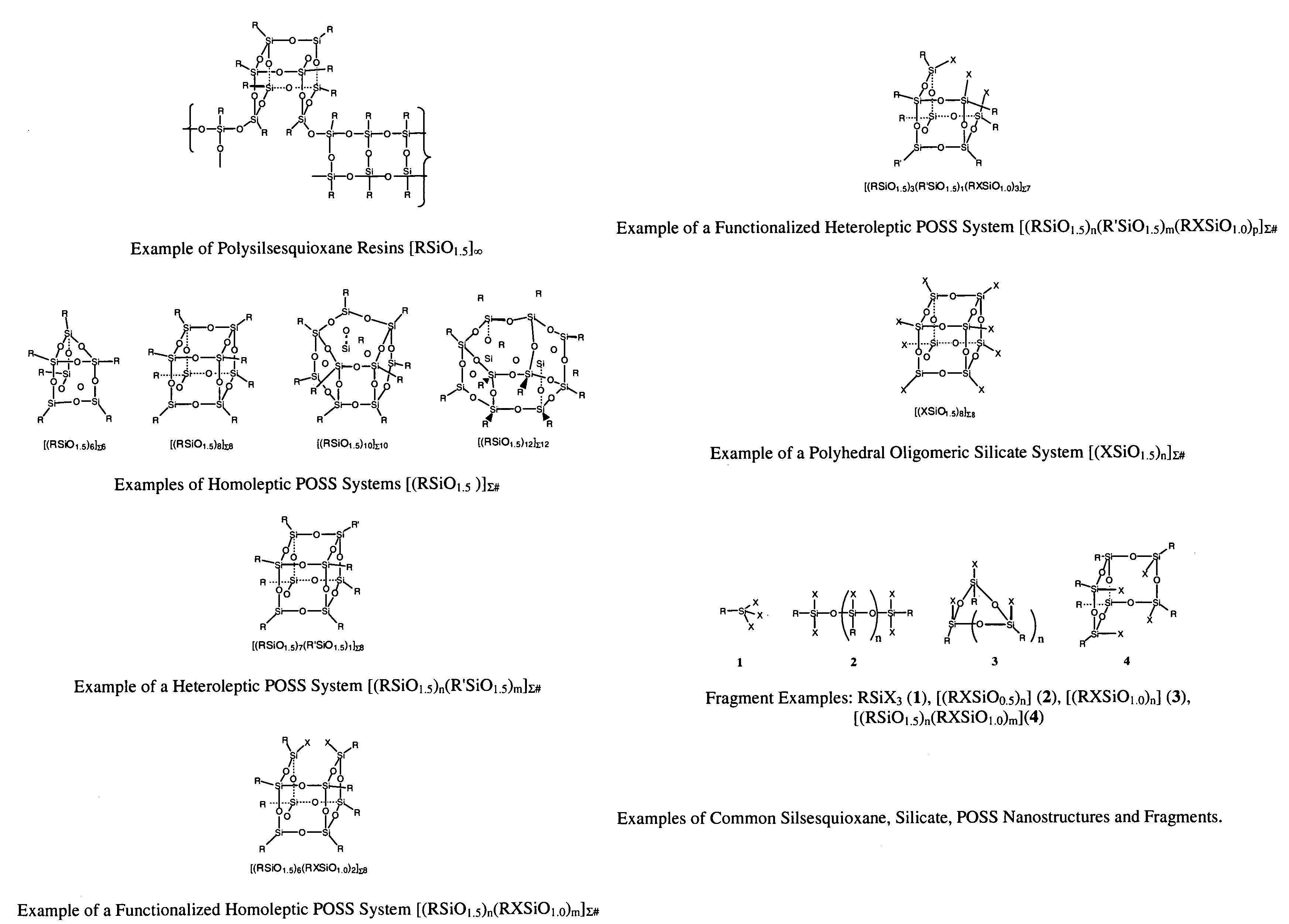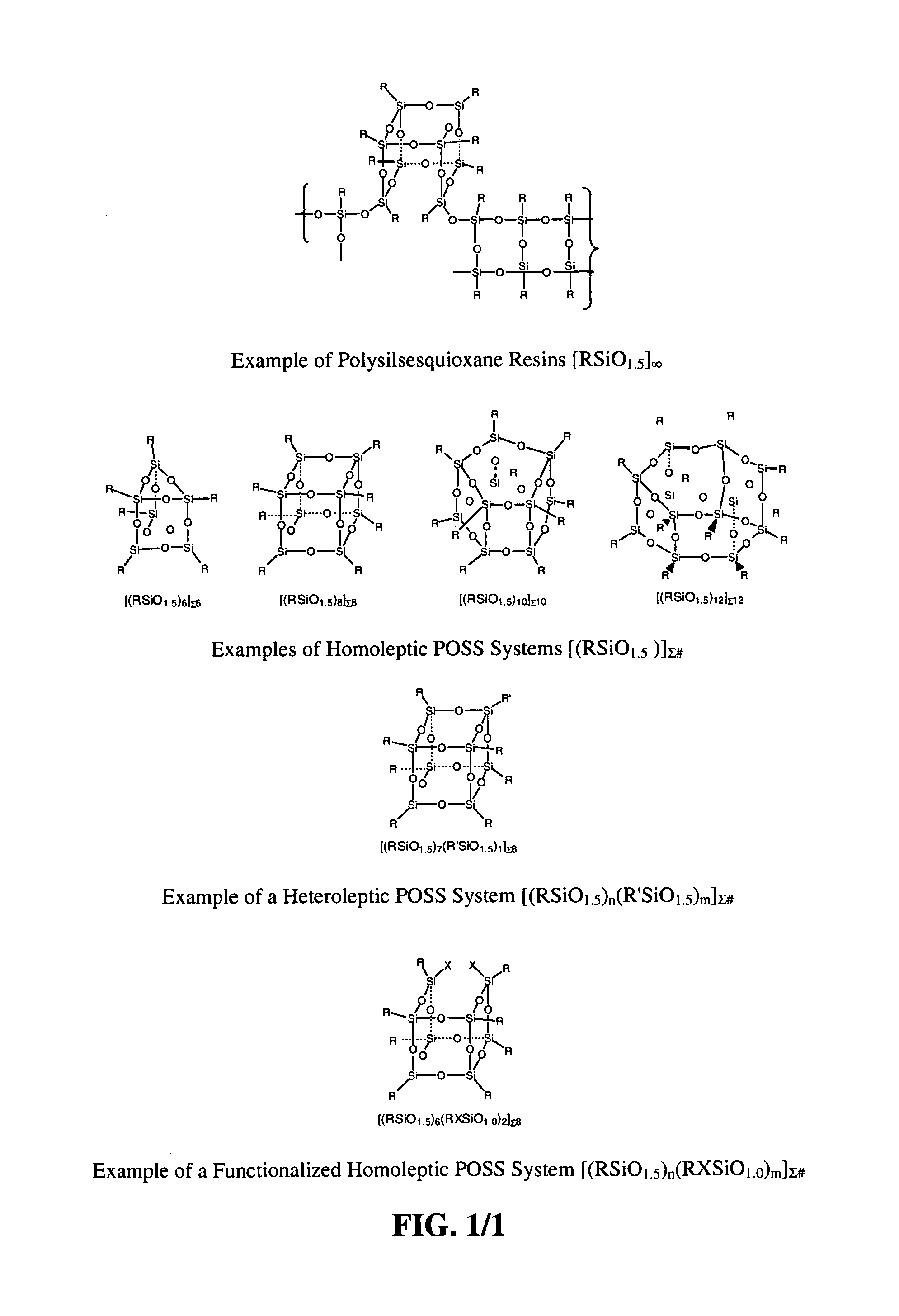Lubrication via nanoscopic polyhedral oligomeric silsesquioxanes
- Summary
- Abstract
- Description
- Claims
- Application Information
AI Technical Summary
Benefits of technology
Problems solved by technology
Method used
Image
Examples
examples
[0052]Alloying Lubricants with POSS Molecular Silicas™. Prior to mixing all Molecular Silicas™ and polymers should be predried at 60° C. to 100° C. under vacuum for three hours or via a similarly effective procedure to ensure removal of traces of water or other volatiles. POSS Molecular Silicas™ are introduced using a weight loss feeder at the desired wt % into the mixing vessel of a shear mixer containing the desired lubricant (or release) formulation components. The mixing residence time can be varied from 1 min to 60 min prior use of the formulation. If desired the lubricant formulation can be filtered to ensure removal of any heterogeneous components and grade qualification.
Solvent Assisted Application Method for Formulation. POSS / POS additives along with the desired lubricant formulation are added to a vessel and dissolved in a sufficient amount of an organic solvent (e.g. hexane, toluene, dichlormethane etc.) to effect the formation of one homogeneous phase. The mixture is the...
PUM
| Property | Measurement | Unit |
|---|---|---|
| Particle diameter | aaaaa | aaaaa |
| Particle diameter | aaaaa | aaaaa |
| Temperature | aaaaa | aaaaa |
Abstract
Description
Claims
Application Information
 Login to View More
Login to View More - R&D
- Intellectual Property
- Life Sciences
- Materials
- Tech Scout
- Unparalleled Data Quality
- Higher Quality Content
- 60% Fewer Hallucinations
Browse by: Latest US Patents, China's latest patents, Technical Efficacy Thesaurus, Application Domain, Technology Topic, Popular Technical Reports.
© 2025 PatSnap. All rights reserved.Legal|Privacy policy|Modern Slavery Act Transparency Statement|Sitemap|About US| Contact US: help@patsnap.com



